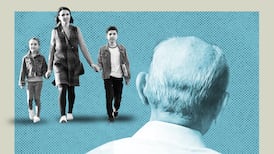A man from Meath conquered more land in India – more quickly – than Napoleon conquered in all of Europe. Yet Richard Wellesley is almost forgotten. An Irish woman, Teresa Ball, helped – from her home in Rathfarnham – to educate thousands of Catholic girls in countries from Canada to India. And a Catholic from Tipperary witnessed a famine eviction as a child, fought the Fenians in Canada as a British officer, but openly advocated for Irish Home Rule. William Butler wrote best-sellers, effectively invented Canada’s “Mounties” and almost prevented the Boer War. Yet most of us have never heard of him.
Too often, Irish history can feel like “eight centuries of British oppression, punctuated by the odd, failed uprising”. But behind that are far more surprising, interesting characters who reveal Ireland’s complex status in a world shaped by European empires. The implications for our sense of national identity have real-world significance.
Ireland had a ringside seat for the UK’s Brexit vote, which boiled down to a simplistic, binary question: “Do you feel European or not?” A similar question dominated Scotland’s independence referendum: “Do you feel Scottish or British?”
Such questions force everyone into one of two opposing camps. Even if your side wins, huge numbers of your compatriots feel alienated, turning electoral politics into a confrontational, zero-sum arena. Instead of focusing on fixing hospitals, the British Tories, and Scottish SNP lost their way in repeatedly relitigating these purity tests, until voters soured on both.
READ MORE
Our debates about a United Ireland tend to focus on logistical questions. What flag would we use? What national anthem? How much would it cost? (Anywhere from €3 billion to €20 billion, depending on which economic analysis you read.)
But if we want to avoid the chaos of Brexit Britain, we need to confront the identity question. What makes us feel Irish? What is our national story, in the context of our long, troubled relationship with our neighbouring island? That was the division that split North from South a century ago.
Whether we’re moving towards a united Ireland or a shared island, these awkward corners of our history help us move past the old binary, reinforced by the Troubles, of “Catholic-Irish-nationalist” and “Protestant-British-unionist”.
Many of the people we meet in Irish Imperial Lives, an RTÉ Radio 1 series and podcast I made with Kate O’Malley, shatter that dichotomy. Richard Wellesley was a Protestant, but both his wives were Catholic. His lifelong support for Catholic emancipation was so deep that it cost him the chance to be British prime minister in 1812. Ball, who founded the Loreto order, helped establish Catholic girls’ schools across the empire, was embraced by Queen Victoria but frequently blocked by Catholic bishops. Butler served the empire with such distinction, from Canada to Africa, that he was knighted, and became Queen Victoria’s aide-de-camp. Yet he was also friends with Parnell, and advocated Irish Home Rule.
Irish people fought against the British Empire from the New World, while others helped expand the British Empire but used their position to advocate for Ireland. One way to think about the latter group is to consider the Stripe founders, Patrick and John Collison from Limerick. You may not like the fact that 19th-century London – like Silicon Valley today – made decisions which shaped the wider world in profound ways. But you can still admire Irish people who, through their talent, tenacity and timing, achieved extraordinary things, without forgetting where they came from.
What about the Irish Presbyterian Lambert Blair, who traded everything from women’s shoes to enslaved human beings in the Dutch-controlled Caribbean? Or the Irish Catholic mercenary Peter Lacy, who led the imperial Russian army that captured Crimea in the 1730s – with disturbing resonances today?
Whether we like it or not, all of these people are a part of Irish history. When we accept that, it becomes a lot harder to exclude unionists or Protestants or, frankly, anyone from our island’s history.
The world built by Europe’s empires is still with us. Why do so many of Ireland’s young people still choose to emigrate to Australia? We’re EU citizens. We can take our pick of any climate that suits us, from Spain to Sweden. We can live and work, visa-free, in many of the world’s happiest, most beautiful, and liveable cities – all a short plane ride from home.
And yet, consistently, our young people move halfway around the world. And if it’s not Australia, it’s often Canada, the US or UK. Why? Because they speak English, and they’ve been welcoming Irish people for centuries ... both things directly linked to the British Empire.
For argument’s sake, imagine if the Battle of Kinsale had gone the other way. The Earls of Ulster and the Spanish forces could have carried the day, preventing the Ulster plantation and making Catholic Ireland an outpost of the Spanish empire. We might all speak Spanish. Consider how radically different Ireland would be today if our strongest ties were with Spain, Mexico and Latin America – and we were adrift from the anglosphere of the UK, US and Australia.
Whether we like it or not, our past shapes our present in profound ways.
Abie Philbin Bowman is the creator and co-host (with historian Kate O’Malley) of the RTÉ Radio 1 series, and podcast, Irish Imperial Lives, which returns on Saturday, August 2nd at 8pm













